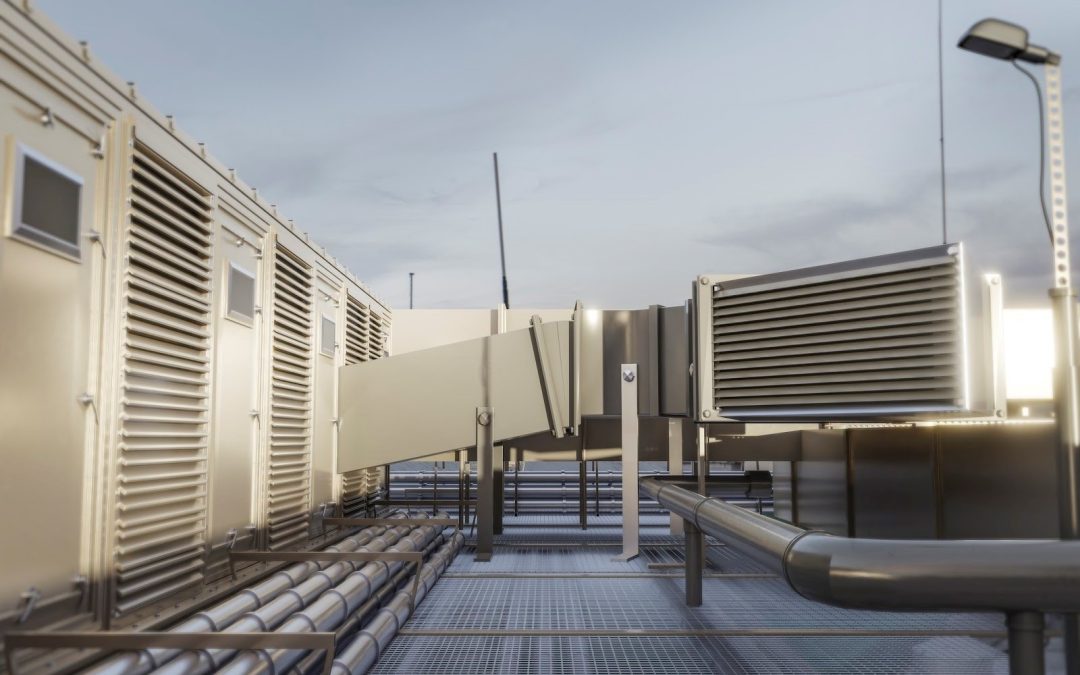Overview of VRV and Central AC Systems:
Variable Refrigerant Volume, or VRV, was created by Daikin. One outdoor unit can link to numerous indoor units in this type of multi-split system. Buildings with various cooling and heating needs across multiple zones are perfect candidates for VRV systems because to their efficiency and versatility, which enable individual management of each indoor unit.
Contrarily, a central air conditioning system will usually include one exterior unit that is linked to a system of ducts that extend throughout the structure. Central air conditioning or heating systems transfer the conditioned air to different parts of a building via ductwork.
Key Comparisons:
-
Efficiency and Energy Consumption:
VRV systems’ ability to save energy is a major plus. This type of technology may adjust the refrigerant flow rate for each zone independently based on its cooling or heating demand. This results in less energy being wasted because only the amount of refrigerant that is actually needed is used. By accurately regulating the compressor speed to match the demand, inverter technology, which is commonly included in VRV systems, further boosts their efficiency.
Modern, high-efficiency compressors and components can greatly improve the efficiency of central air conditioning systems. Nevertheless, compared to VRV systems, they often do not provide as much zone-specific control. If the system is cooling or heating regions that are not in use or require different temperatures, this can result in increased energy use.
-
Initial Cost and Installation:
While central air conditioning systems are more affordable in the long run, VRV systems often have a greater upfront cost. The sophisticated technologies and the intricate installation process are to blame for this. It usually takes more time and skill to connect each interior unit to the outside unit individually.
Central Air Conditioning Systems: These systems are typically easier to install and have a cheaper initial cost, especially in buildings that already have ducting. During installation, the outdoor unit is set up and linked to the existing ductwork system.
-
Flexibility and Scalability:
VRV systems provide a great deal of adaptability and expansion potential. They are perfect for structures that may require future extension because of how readily they can accommodate more interior units. With the ability to regulate each indoor unit separately, different zones can be set to their ideal comfort levels.
Central air conditioning systems are not as adaptable when it comes to adding or removing units. Due to the need to change the ductwork and maybe upgrade the central unit, adding additional zones or expanding the system can be a more involved and expensive process.
-
Zone Control and Comfort:
VRV systems’ capacity to deliver pinpoint zone control is one of their most notable qualities. With the ability to adjust the temperature of each interior unit independently, people can create unique environments that suit their needs. This is especially helpful for buildings that have varying uses, including hotels, office complexes, and multi-story homes.
Zoning capabilities are available in certain central air conditioning systems, however VRV systems usually offer more precision and versatility. When compared to VRV systems, zoning in central systems is less precise and frequently necessitates the use of supplementary equipment like dampers and individual thermostats.
-
Reliability and Maintenance:
Because of the sophisticated technology and large number of components, VRV system maintenance might be more time-consuming and expensive. But these systems are built to last, so you won’t have to worry about maintenance expenses in the long run.
Using common parts and technology, central air conditioning systems are typically easier and cheaper to maintain. However, because the system is centralized, a large component failure can have an impact on the building as a whole.
FAQs:
-
How Long Does Aircon Last?
A number of factors, including use, maintenance, and installation quality, affect how long an air conditioner lasts. Central air conditioning systems typically have a lifespan of 10–15 years with regular maintenance. But to keep it running well and for as long as possible, routine maintenance is essential. As part of this process, you should clean or replace filters, look for leaks, and arrange for inspections by professionals. How often you use it and the weather are two more factors that can affect how long it lasts. Your air conditioning system can last longer if you get a high-quality unit and stick to the maintenance plan.
-
How Do I Know If My AC Need To Recharge?
It may be time to recharge your air conditioner if it isn’t cooling as efficiently as it once did. Keep an ear out for weird noises, restricted airflow, or heated air flowing out of the vents; these could be indications of a problem. You should also look for a decline in cooling performance or frost formation on the refrigerant lines. It is recommended that you call a professional HVAC specialist to evaluate your system if you observe any of these symptoms. If your air conditioner isn’t working properly, they can check to see if a recharge is required.
-
What Is 3 Minute Rule For AC?
If you want to turn your air conditioner back on after turning it off, you should wait at least three minutes, according to the 3-minute rule. To avoid damaging the compressor and a hard start, it is necessary to wait for the system pressure to equalize. Compressor life and efficiency might be negatively affected by sudden restarts. By adhering to this rule, you may extend the life of the air conditioner and keep it running smoothly and efficiently.


